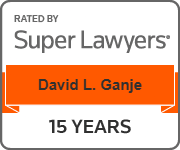The U.S. Army Corps of Engineers recently published a Notice of Proposed Rulemaking in a new effort to obtain control over ‘surplus water’ found in its managed water reservoir systems. The Corps is attempting to define ‘surplus water’ in order to manage and sell the so-called surplus water. This is the second time in recent memory that the Corps has engaged in this enterprise. The Corps is a federally created regulatory monopoly with management over certain waters of the United States. The Corps is in effect the world’s largest civil engineering firm. In its last attempt, the Corps was hand-slapped for trying to sell water it did not own. So now it proposes to ‘enter into contracts for access to surplus water.’ These contracts will inevitably involve the exchange of money of course. In good bureaucratic language the Corps states that it desires to “establish a new methodology for determining a ‘reasonable’ price for surplus water Contracts.”
The Corps in this new rule takes two radical positions regarding water rights. 1. The Corps in drafting this new rule publically states it does not have to acknowledge the several upper Missouri River basin states’ claims to the natural flows of the Missouri river. These Upper Missouri River basin states include North Dakota and South Dakota. ‘Natural flows’ are waters in a river available by law for the states to allocate for the beneficial use of the citizens of the states. In other words these are state’s rights claims to use of the waters within its borders. Under case law and several statutes, states have the right to make use and allocation decisions concerning water within its borders. 2. The proposed new rule also chooses to dismiss claims that the upper basin Indian tribes have to waters under the Winters Doctrine. The U.S. Supreme Court held in the Winters case that water rights were reserved for Indian tribes as an implied right to the use of waters under the treaties that created reservations. These water rights are preserved for the tribes whether or not they are in current use. Nevertheless, in its comments the Corps states, “In proposing this rule, we recognize that Tribal reserved water rights enjoy a unique status under federal law. We do not believe that the proposed rule has tribal implications.”
In both instances described above the Corps is proceeding akin to a bureaucracy that wishes no interference from outside sources. The Flood Control Act under which the Corps obtains authority states that no sale of water may be made that affects existing lawful uses of the water. How could one manage or sell ‘surplus water’ until you knew the claims and amounts of those parties who have a right to the use of all the waters — now and in the future? The Corps is specifically prohibited from selling waters if such sale adversely affects existing lawful uses of such water. The Corps’ rulemaking authority does not extend to superseding legal claims to water rights by American Indian tribes or the states.
The Missouri River’s waters are impounded by the Corps in its managed reservoirs. Under the proposed rule the Corps does not include the two positions (state water claims and tribal water claims) in its calculation of surplus water, neither does it incorporate the two claims in its analysis, nor quantify any claim amounts.
Technical, unresolved issues also exist under the Corps new rulemaking effort. The Corps has over the years issued various water easements and water use agreements. A 2012 review of withdrawals from Corps reservoirs suggested that many water withdrawals are occurring without a formal water supply agreement, without a clear statement of authority for the withdrawals, or without reimbursement to the Treasury for costs incurred by the federal government in accommodating those uses. In a separate report the Corps also acknowledged that, “the quantities of water being withdrawn through these easements are difficult to determine from the available data.”
The largest use of water from the Oahe reservoir, by way of illustration, is for irrigation. This demand may increase. It would behoove the Corps to better know and quantify the demands for irrigation before it declares any reservoir water as ‘surplus water.’ The Corps master manual requires the Corps to defer to irrigation uses when conflicting claims arise. While irrigation management is not within the Corps authority, it acknowledged in 2012 that there were 60 irrigation easements operating out of the Oahe reservoir. The Corps argues under the proposed rule that it should sell water if, “. . . the authorized purpose or purposes for which such water was originally intended have not fully developed;” The risk to upper basin states and Indian tribes is that once water is regulated as surplus water, and once it is consumed by end-users, it becomes that much harder to later re-institute the original legal as well as declared beneficial uses of the water.
David Ganje practices in the area of natural resources, environmental and commercial law.





